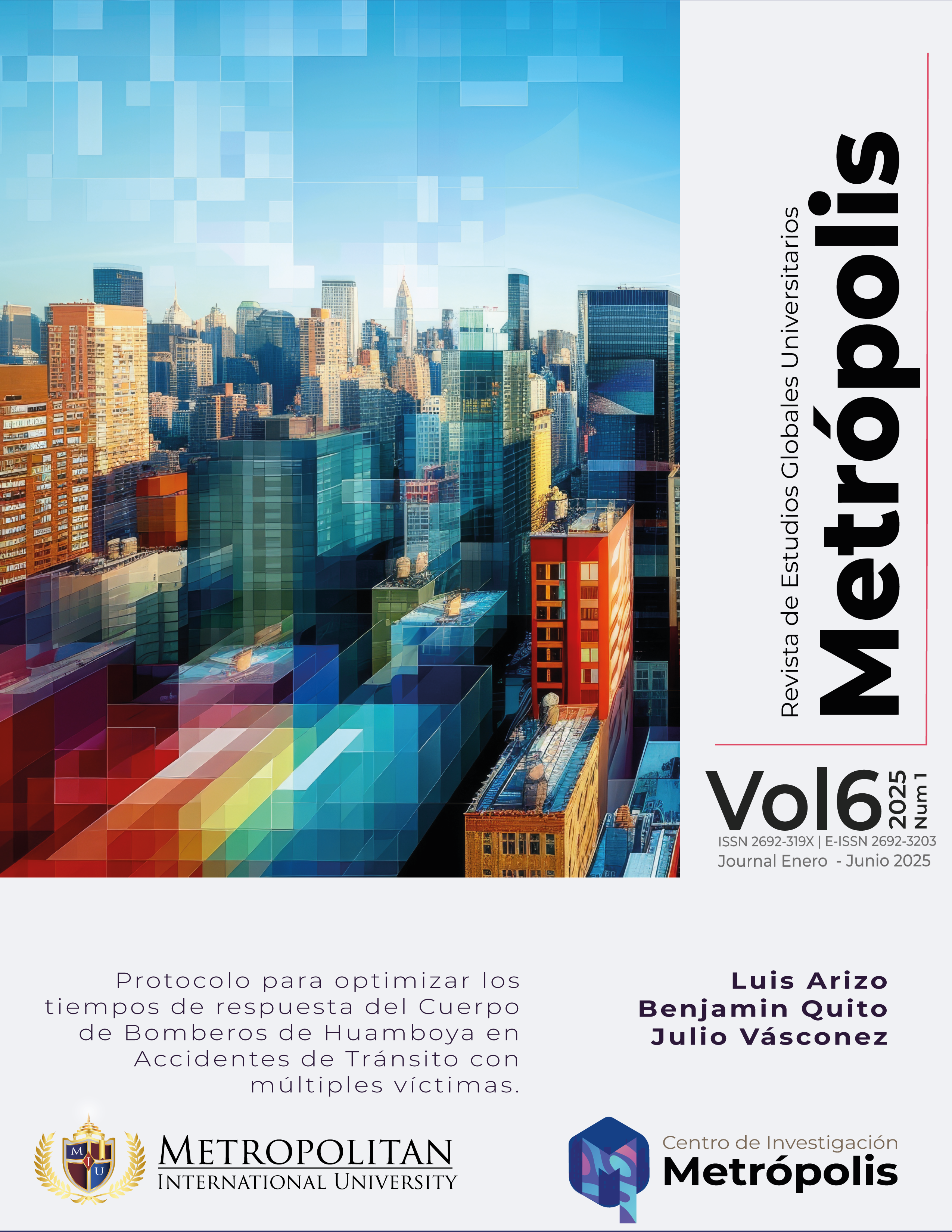Protocol to optimize the response times of the Huamboya Fire Department in response to emergencies with Traffic Accidents with multiple victims.
Keywords:
Vehicle Rescue, Traffic Accident, Multiple Victims, Firefighters, TriageAbstract
The study employed a deductive approach and mixed methods to examine and address the challenges faced by the Huamboya Fire Department in managing mass traffic accidents. International frameworks, such as early warning systems from Japan and Germany, were adapted to the local context. These approaches combined quantitative and qualitative data to identify shortcomings, including personnel shortages and inadequate infrastructure along the E35 Macas-Puyo highway. This methodological integration enabled precise problem identification and the development of targeted solutions, such as geolocation technology, triage training, and partnerships with neighboring districts. The research underscored how merging deductive and mixed methods ensured the adaptation of global best practices to local conditions. For example, by adopting the START triage protocol used in U.S. drills, training exercises were tailored to Huamboya’s terrain. Quantitative findings revealed that optimizing logistics and investing in equipment could reduce average response times by lower percentage within a year. Qualitatively, community engagement and ongoing training proved vital for sustaining protocols. Reconciling global evidence with local priorities emphasized practical, life-saving measures and strengthened emergency resilience. This approach confirmed the feasibility of international frameworks while highlighting the need for adaptations, ensuring strategies like improved signage and resource-sharing agreements effectively addressed Huamboya’s specific needs. The study illustrates that combining methods generates viable interventions in resource-limited settings. By aligning standards with on-the-ground reality, the protocol improves response efficiency and fosters community trust and long-term operational sustainability. These results demonstrate that strategic adaptations coupled with local data and stakeholder input can transform response systems and save lives.

Downloads
Published
How to Cite
Issue
Section
License

This work is licensed under a Creative Commons Attribution-NonCommercial-ShareAlike 4.0 International License.



